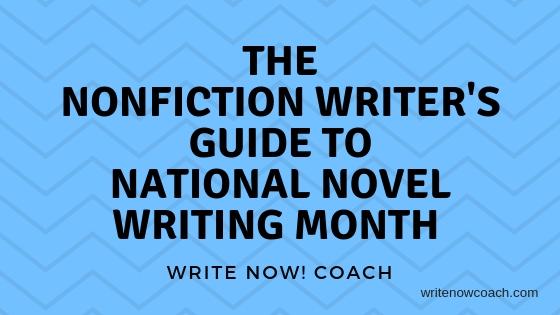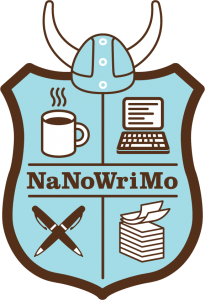The Nonfiction Writer’s Guide to National Novel Writing Month
October 16, 2018
Note From Rochelle
Dear Writers,
I need your help.
I want to offer you the types of workshops that will help you move forward with your writing and other projects. But I need to know what you want to learn. Please take a moment to fill out my survey on the topics that interest you most.
And here’s the fun part—one of you will win a complimentary 45-minute coaching session. (That’s a value of $100!) Here’s the link to the survey.
Today’s tip will help you plan for writing your nonfiction book during National Novel Writing Month!
Enjoy!
Rochelle

The Nonfiction Writer’s Guide to National Novel Writing Month
By Rochelle Melander

Image Courtesy of National Novel Writing Month
If you long to participate in National Novel Writing Month but don’t write fiction—do not worry! Ditch the rules and use the month to create the project of your dreams. You might want to complete a book of poetry, a coaching guide, or even a family history. Here’s my simple guide to planning to write nonfiction during NaNoWriMo!
Ditch the Rules
When you choose to write nonfiction, you’ve already broken the mold. National Novel Writing Month is designed for novelists, but nonfiction writers can use the discipline and energy of the month to complete projects, too. After breaking the genre rule, consider what other rules you want to ditch:
+Length. The NaNoWriMo rules declare that in order to win, writers must compose a 50,000-word book in a month. But if you don’t care about winning, your project can be any length you choose.
+New. Although NaNo allows for planning ahead of time, participants can count only words created during the month toward the win. But if you’d like to use the month to finish a stalled project—do it.
Dream Up a Project
You might already have dreamed up a project for National Novel Writing Month. If so, yay you! If not, take your journal to a coffee shop or library and dream away
Remember, now that you’ve ditched the rules, you don’t have to worry about writing 50,000 words. You could create a book of poems, exercises, quotes, tools, or recipes. Dream up a project that you will find delicious to work on.
Consider creating a book that will help you in your work. Maybe you need a new giveaway for your website or a book to accompany a popular coaching program. Or maybe you’d like to create a small booklet that you can pass out when you speak. This is the time to create it!
Decide on the Details
Once you decide on the topic for your book project, it’s time to sketch out the rest of the book details. Consider:
+What kind of a book will you write? I’m talking book structure here. Once you know what type of book you’re writing—a collection of essays or a how-to book—you can write it much more quickly. Check out my blog post on book structures for more information.
+How long will your book be? NaNoWriMo participants must write about 1666 words a day to reach the 50,000-word goal by the end of the month. If you’ve dumped that rule, you will need a new goal to measure your success throughout the month. Decide how long your book will be—and use that to create a daily writing goal.
+What will your small chunks be? Every book is made up of lots of small chunks—scenes or exercises or bits of information. Decide what kinds of chunks will make up each chapter, and you’ll have a clearer sense of what you need to create for each writing session.
Develop Your Content
Now that you’ve decided what you’re writing about and what that’s going to look like, you can create a list of topics to cover. Note that this does not have to be a traditional outline. (Most people cringe when I talk about outlines. For some reason, the idea of outlining sounds a whole lot harder than writing.) But you do need some sort of roadmap for the month. List anything you think you might write about during the month. Don’t worry about putting this list in any kind of order. Just get it down. Each day, you can use the list to choose something to write about.
Design a Schedule
If you’ve followed my blog for any length of time, you know that I believe that deciding when and where you will write makes you much more likely to actually do it. So, set up a schedule for November that fits your life and your project. Since you’ve ditched the rules and decided on your own personal outcome, create a schedule that will help you create your particular project.
Do it!
Now that you’ve prepared for the month, you’re ready to put your butt in the chair and do it! Go for it!
And, if you need help planning—schedule a complimentary consultation.








